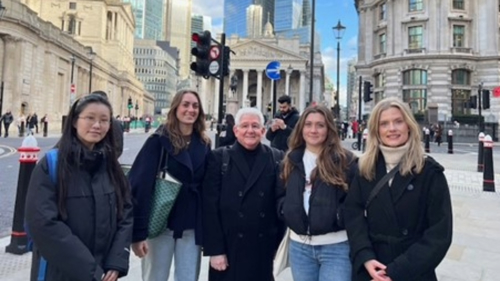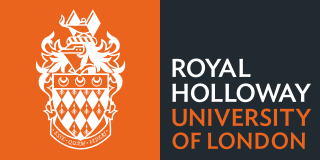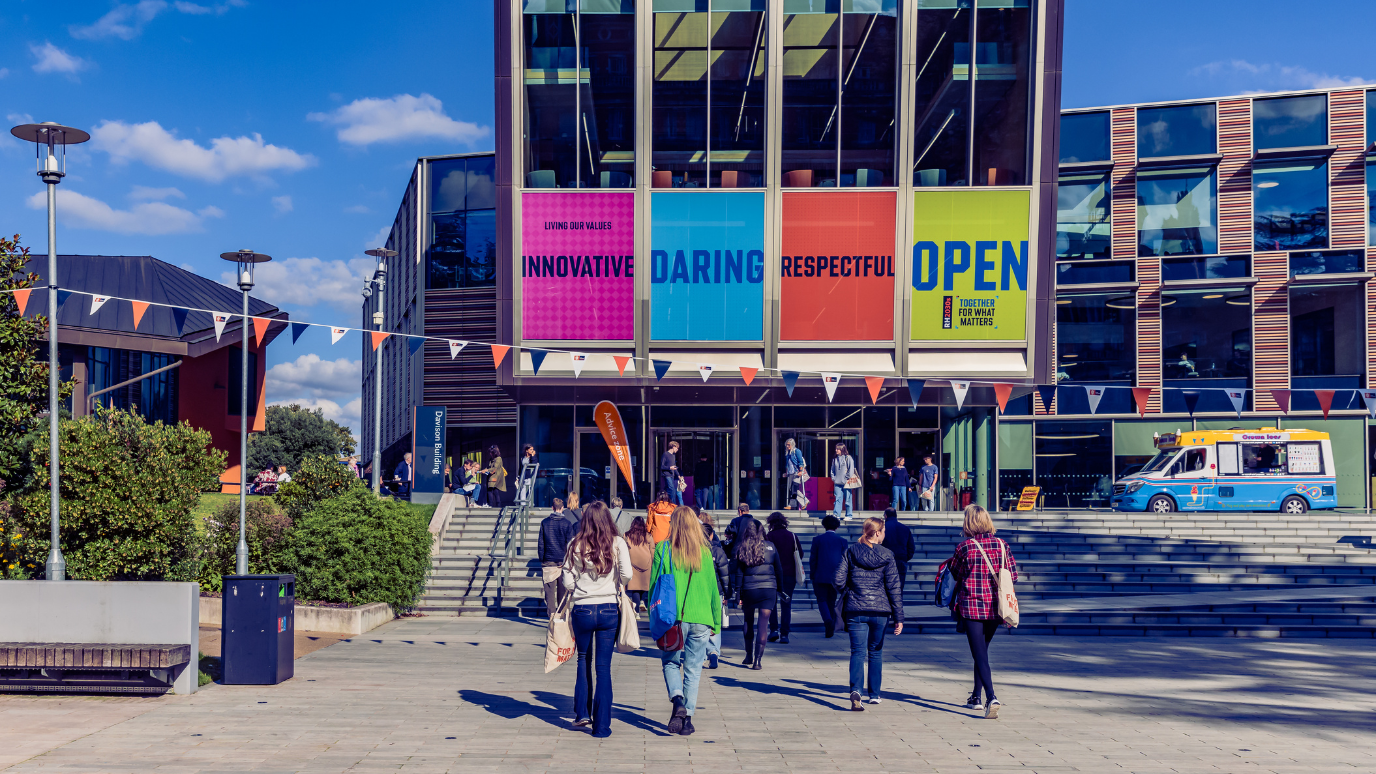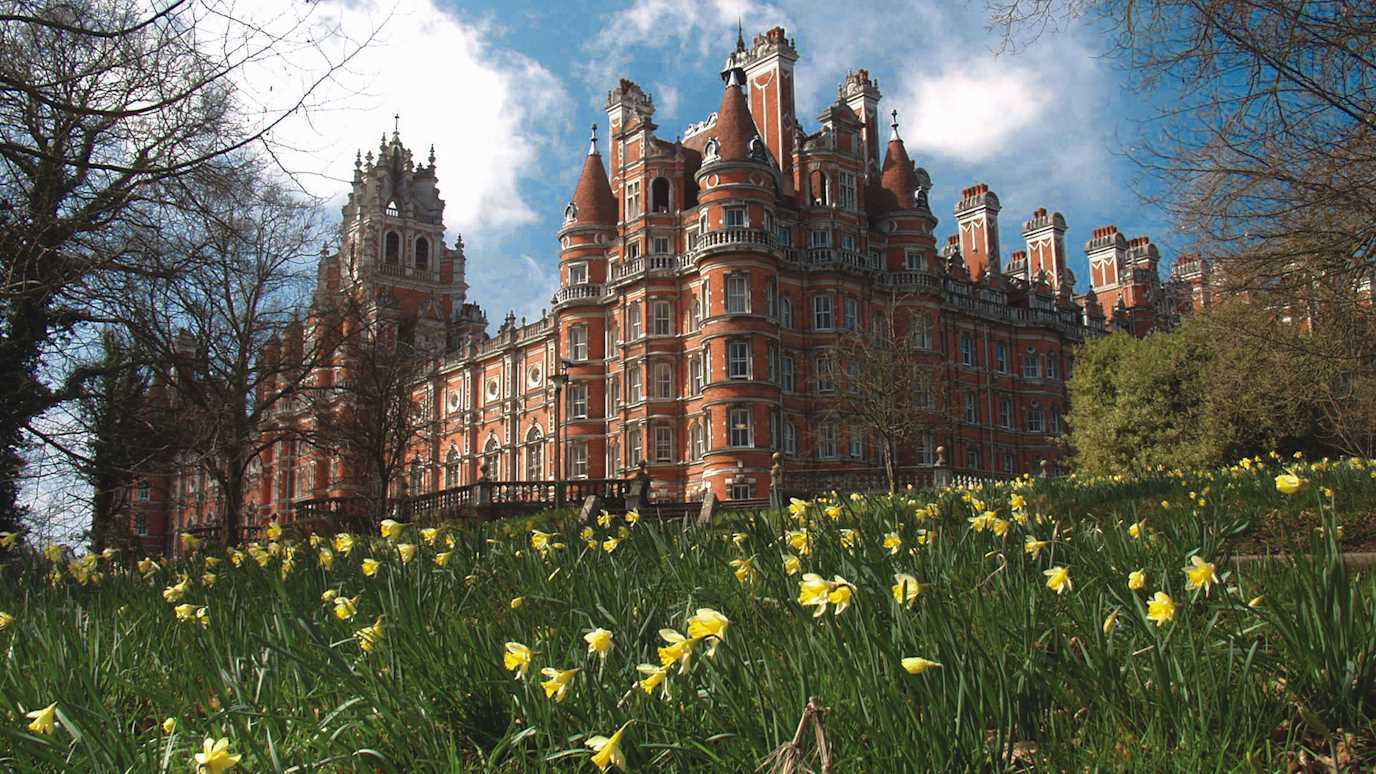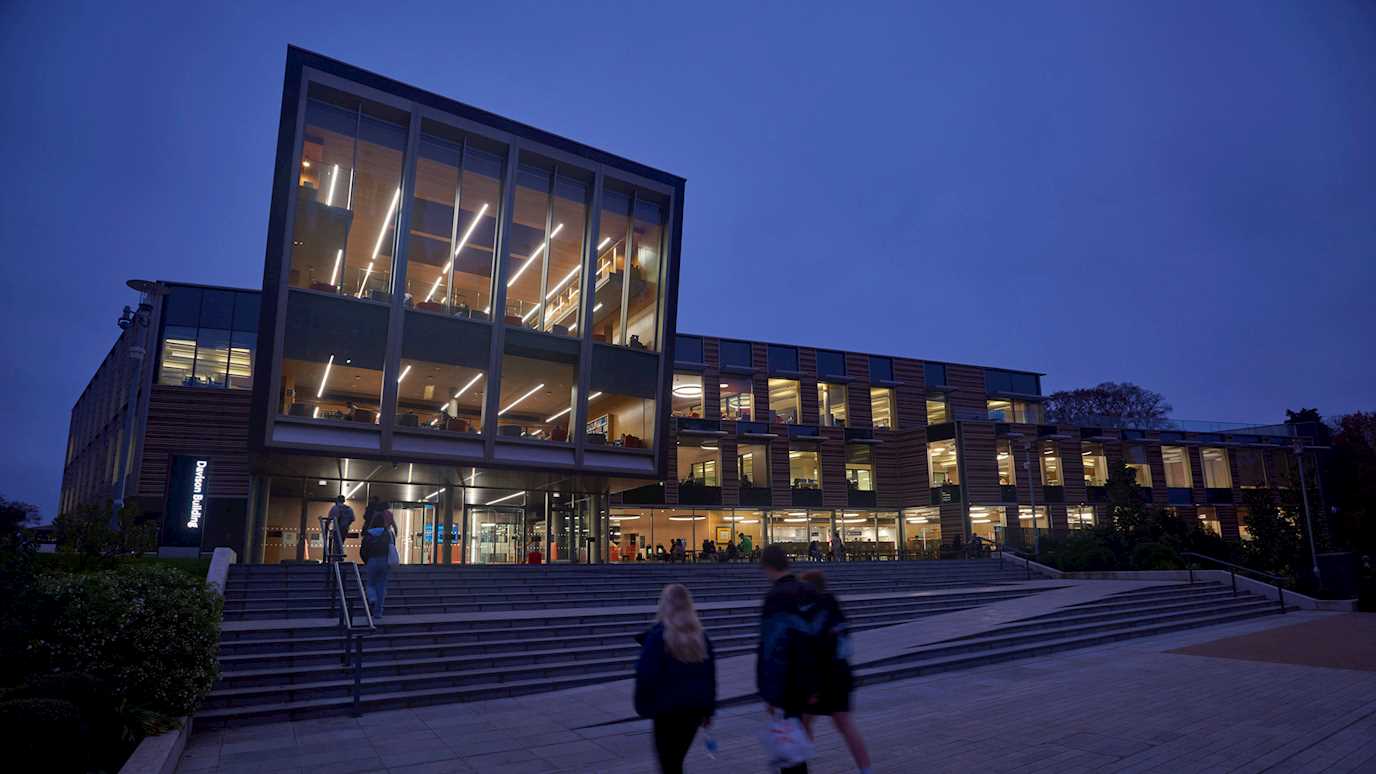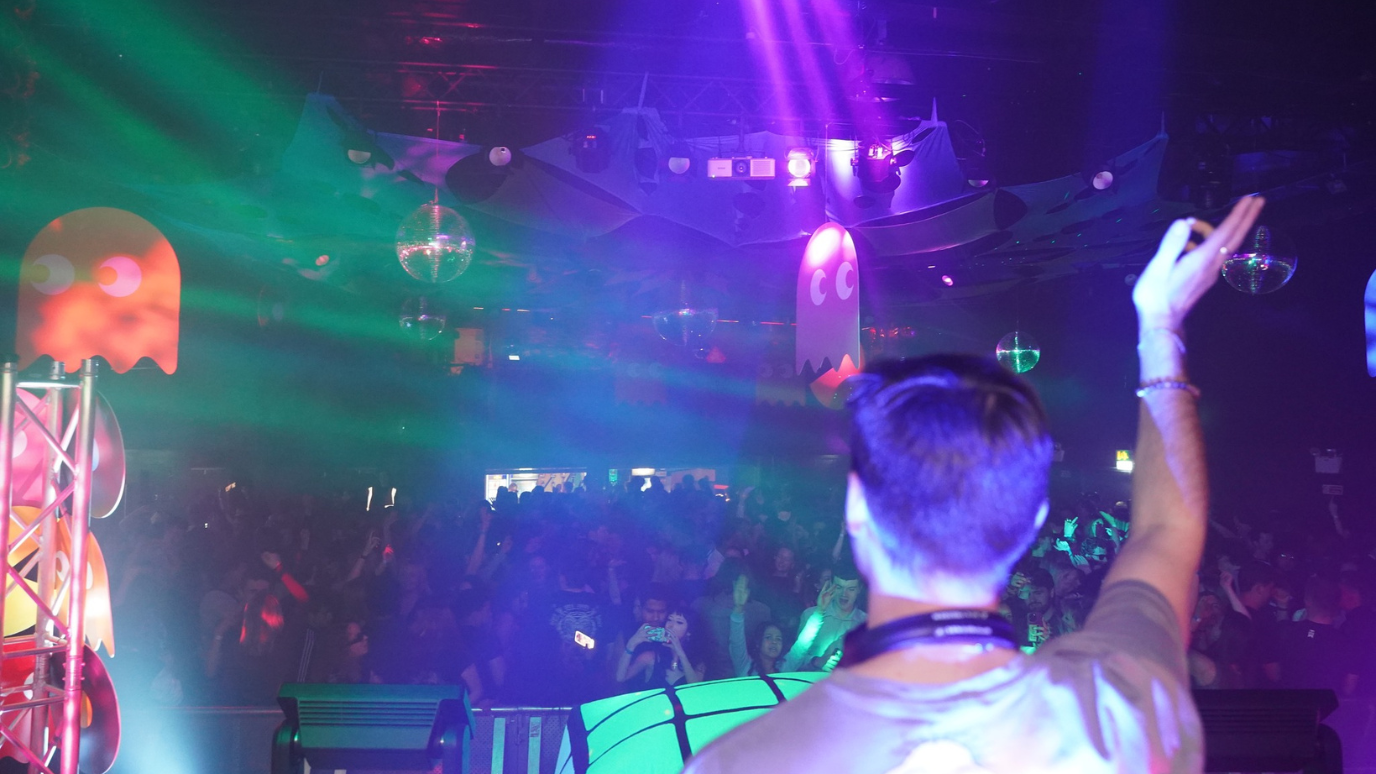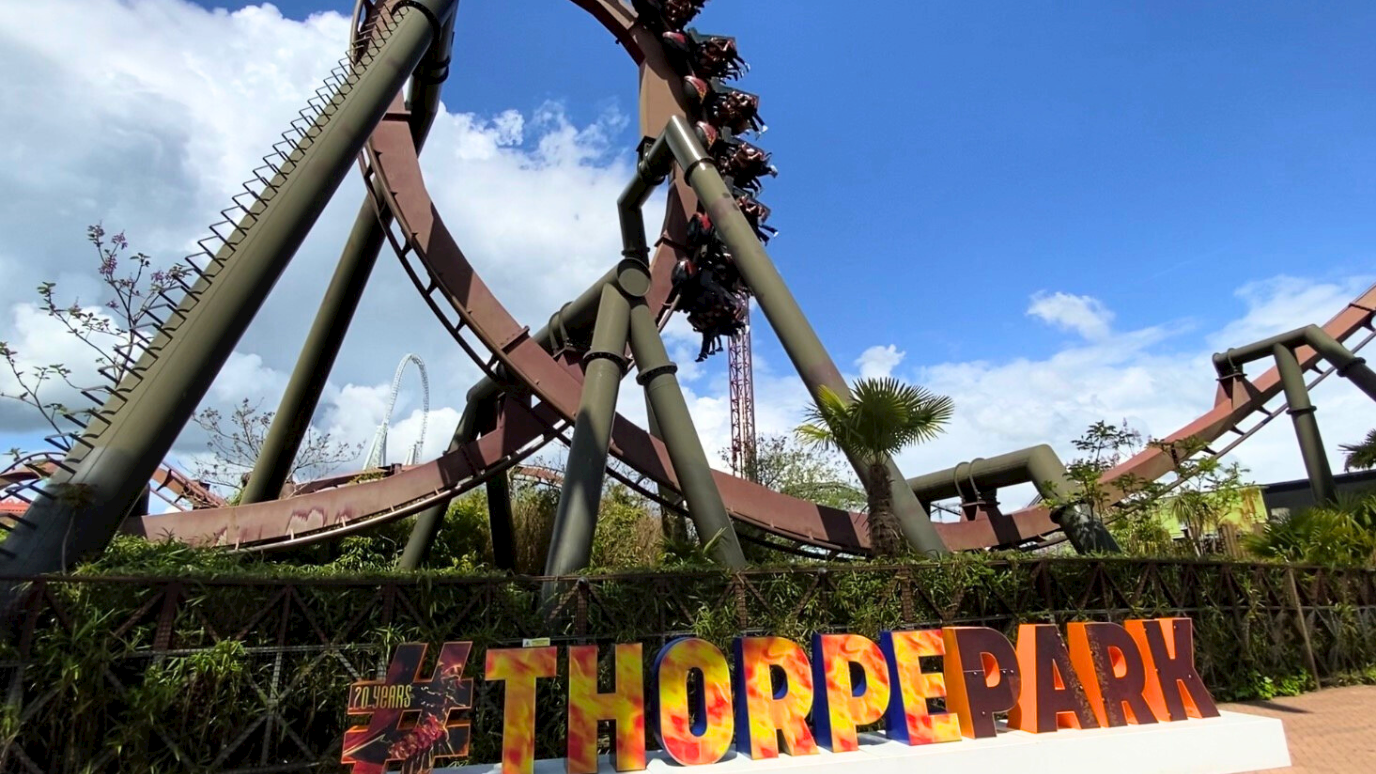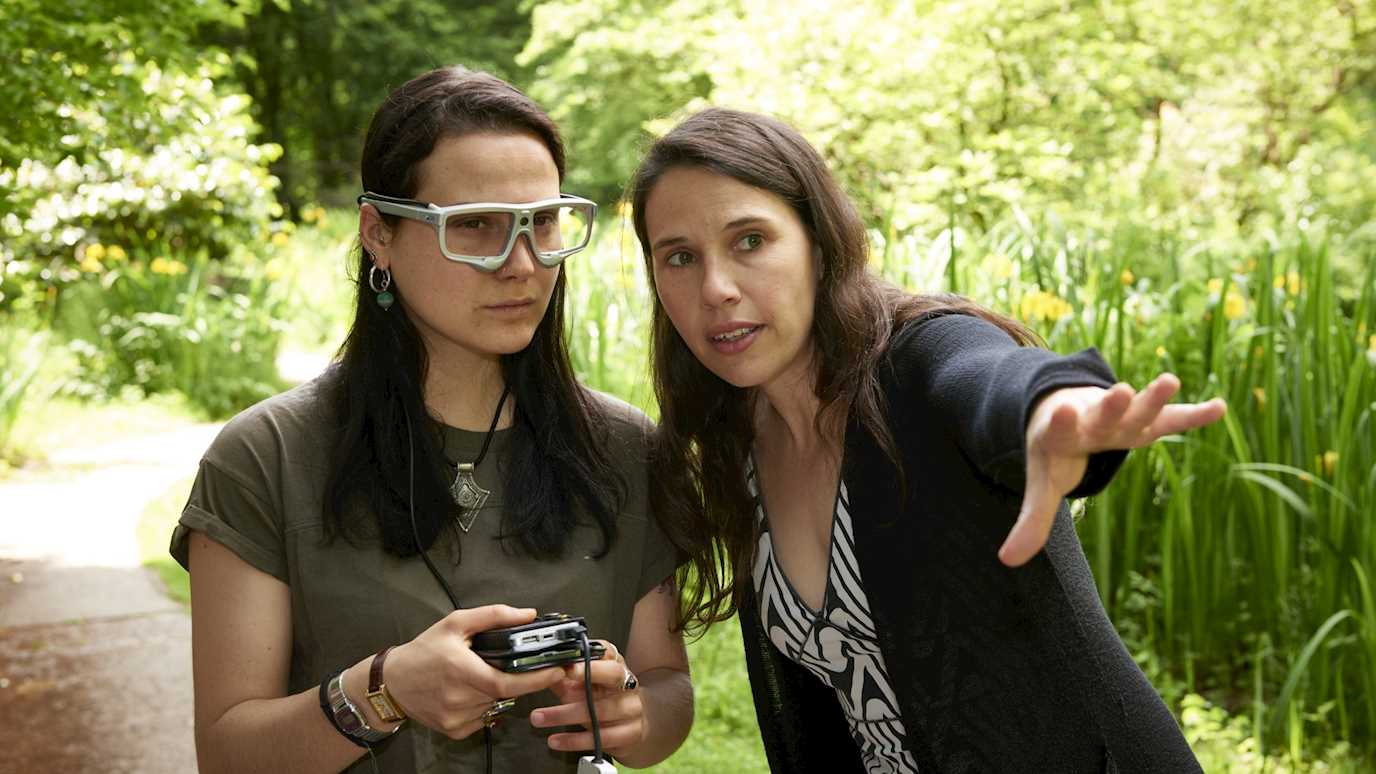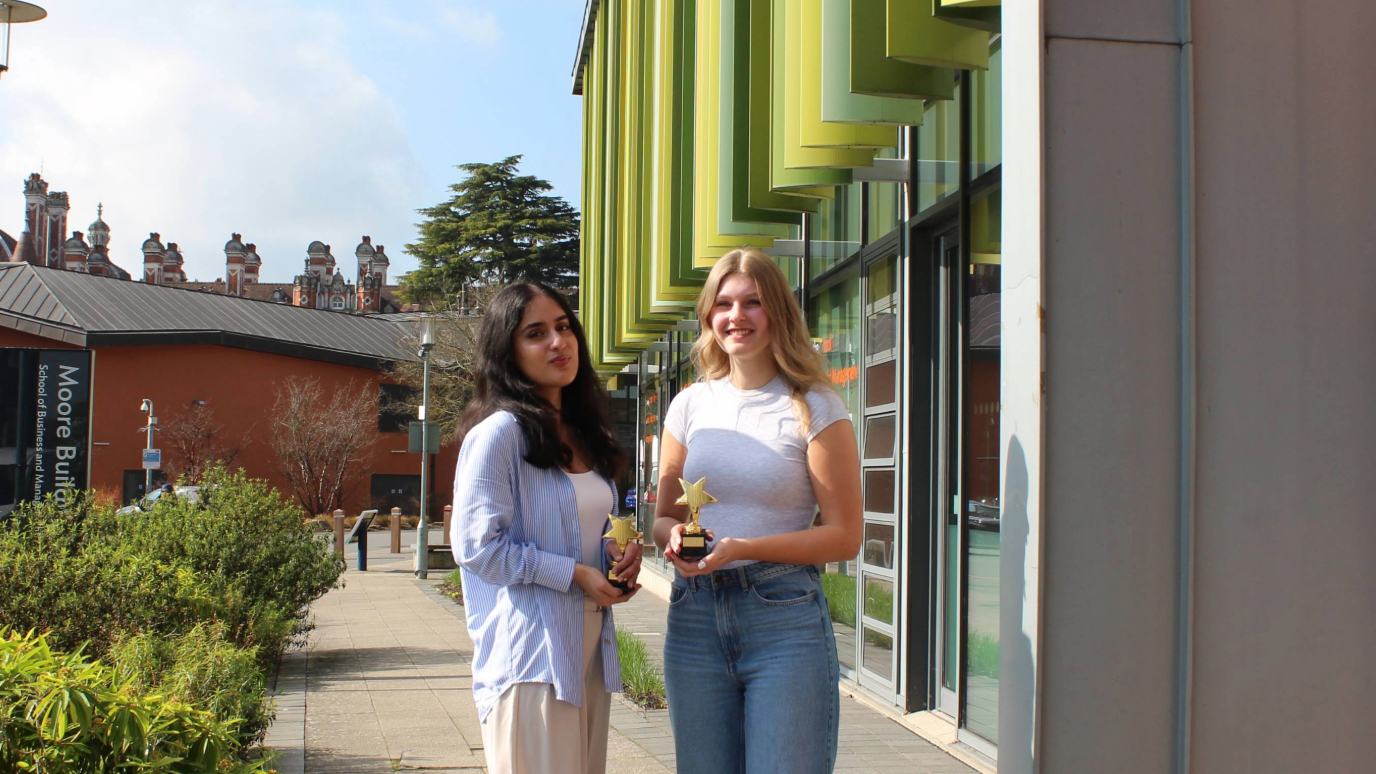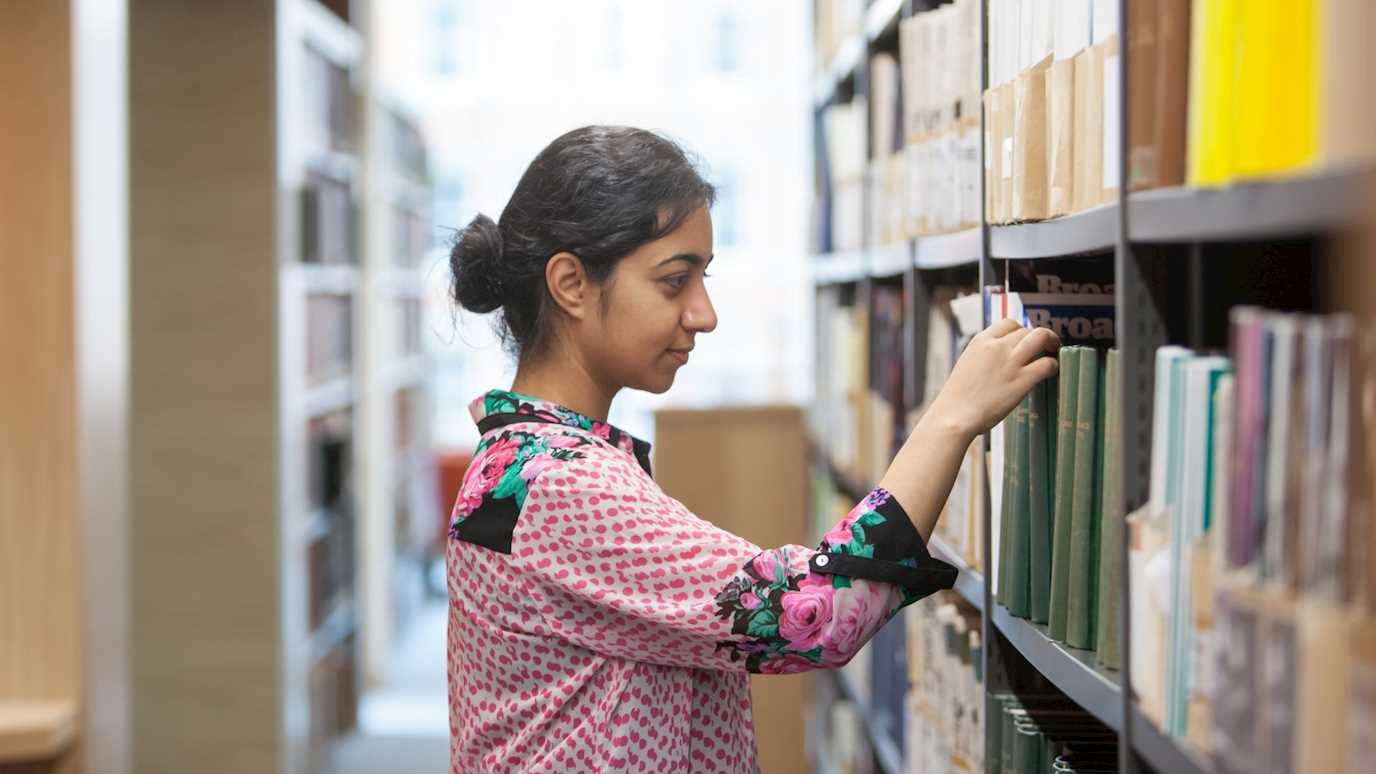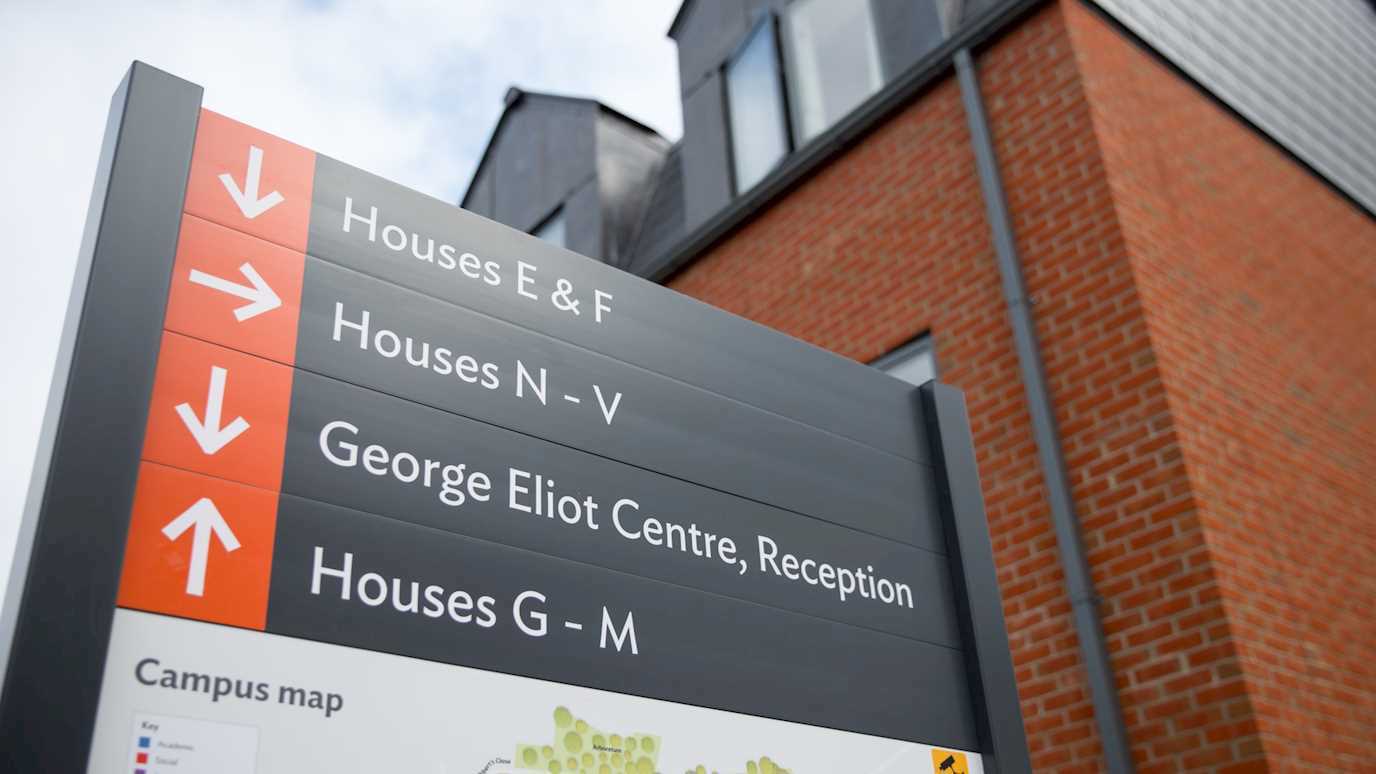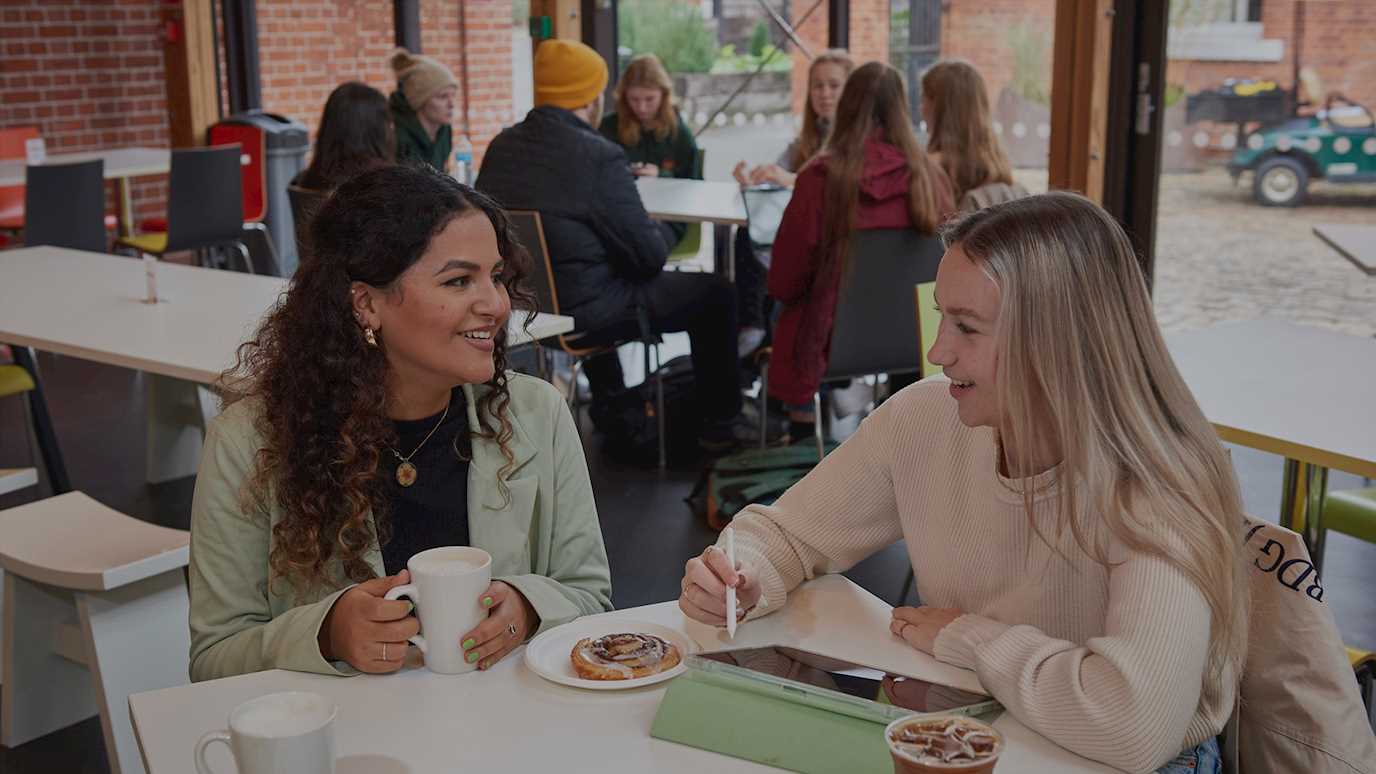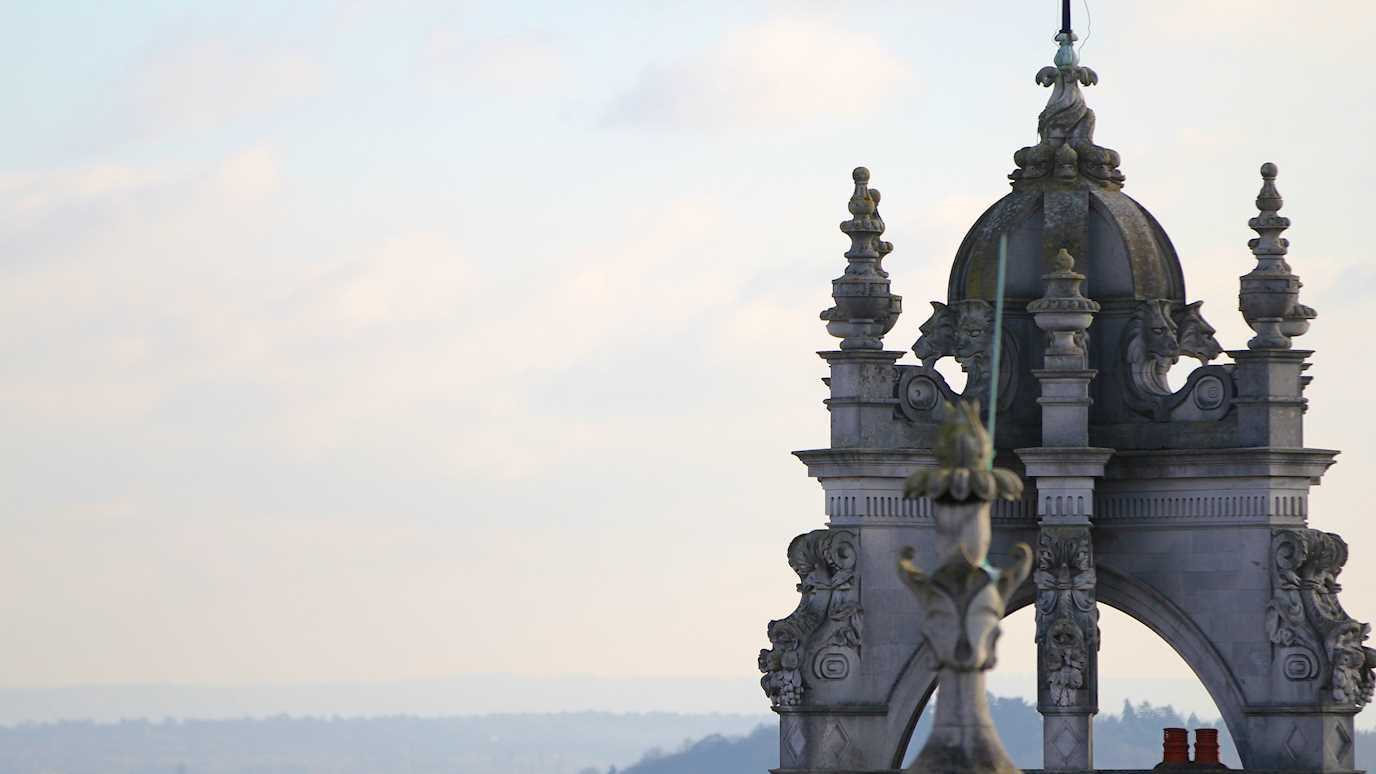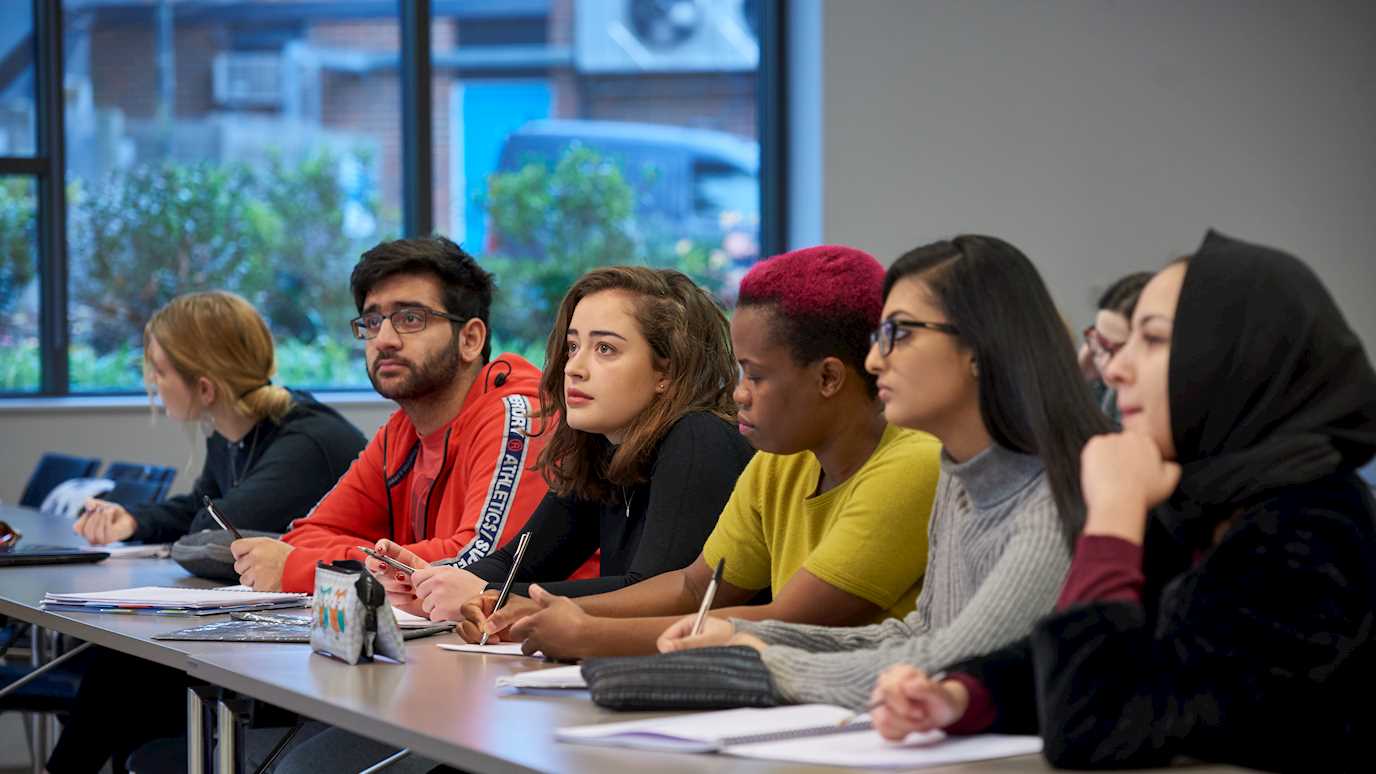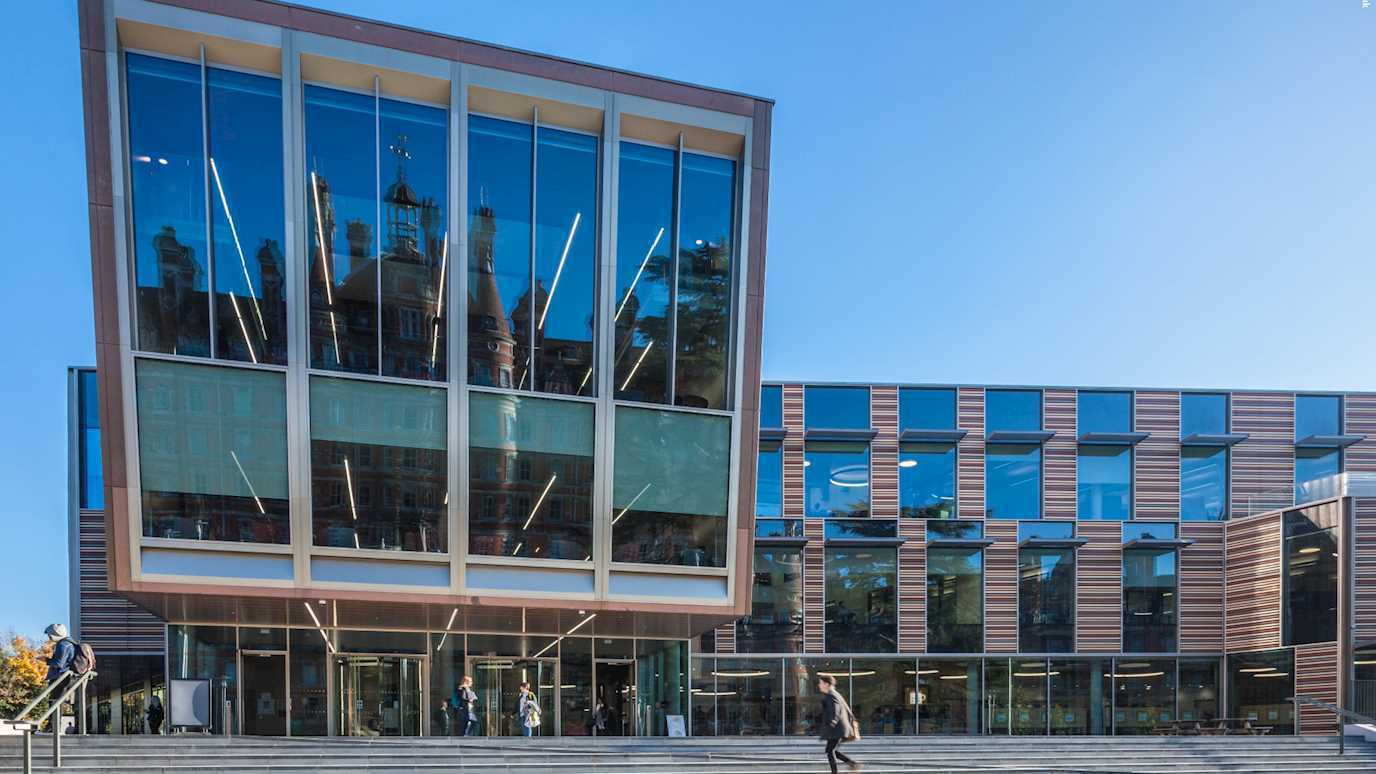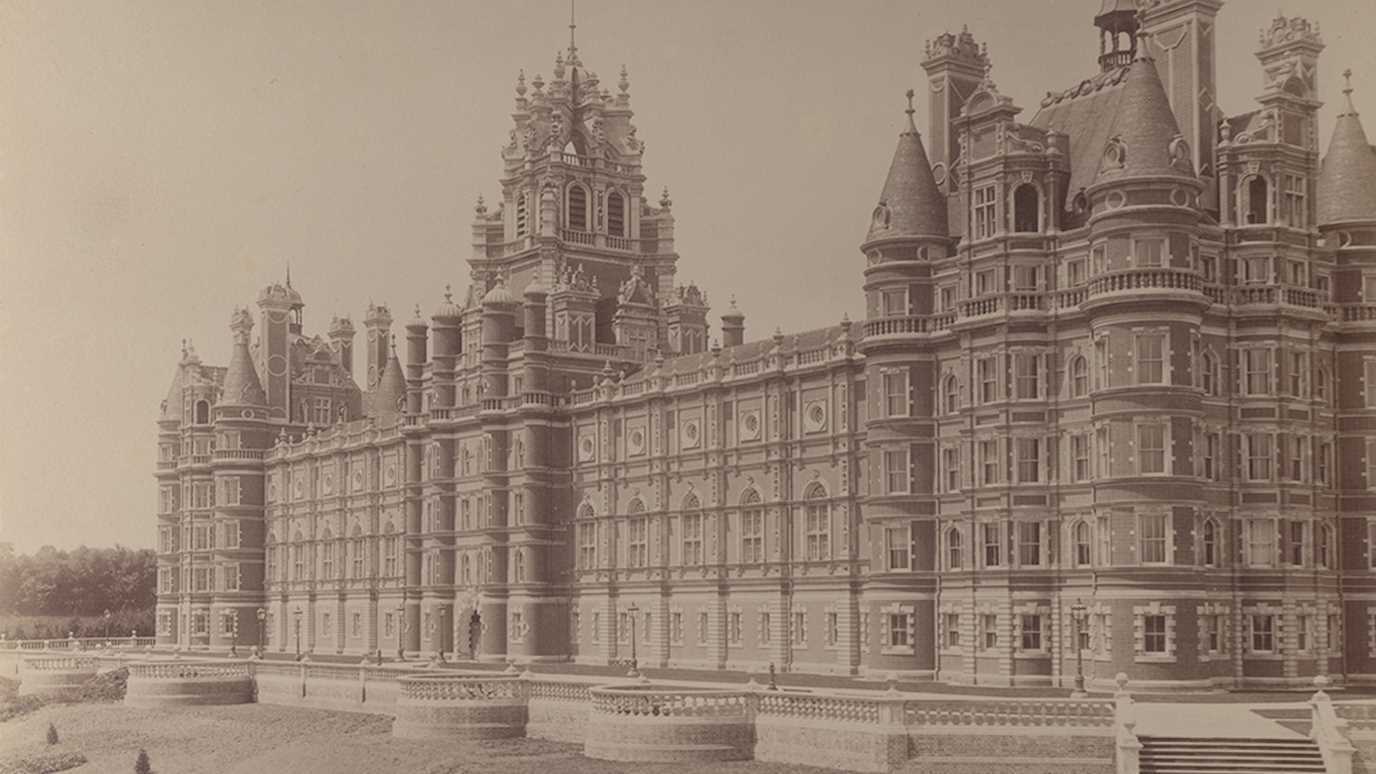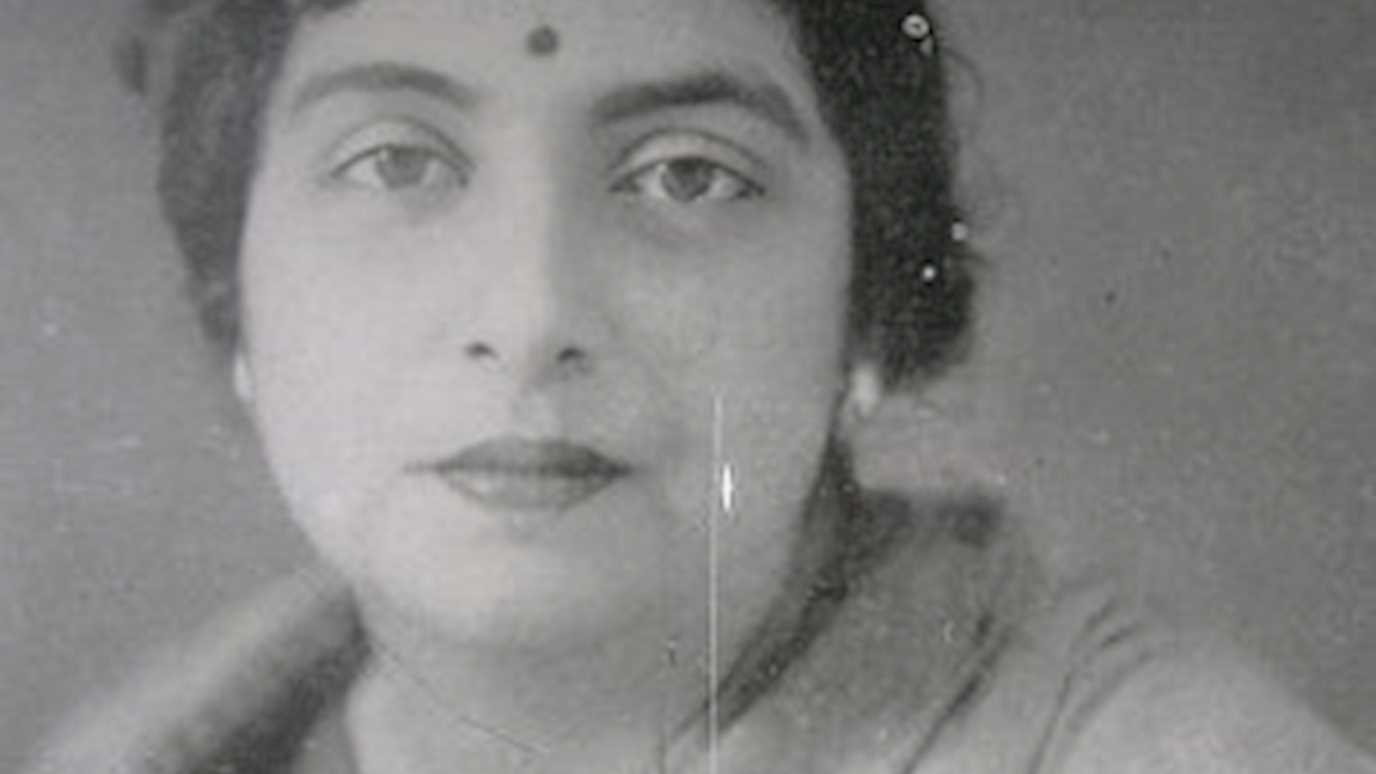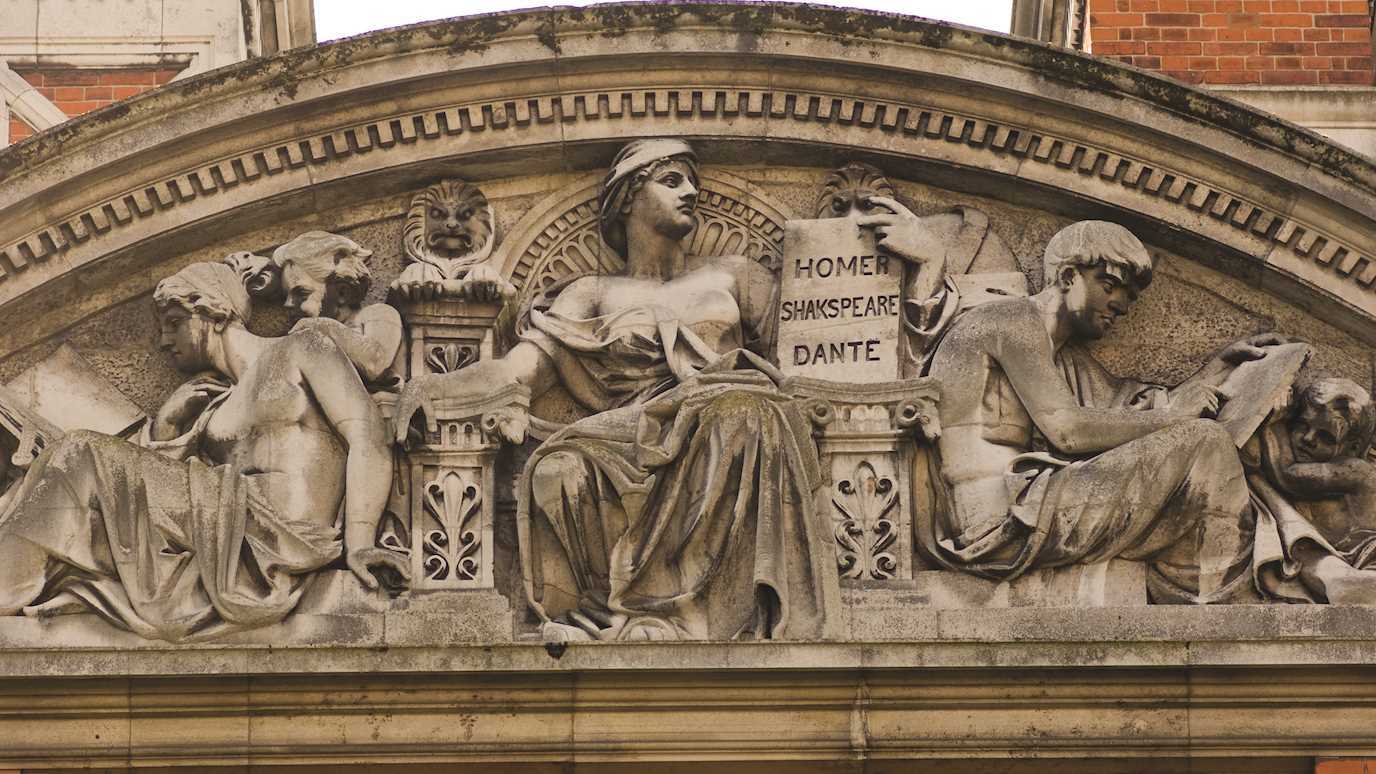On the 22 January School of Business and Management students from the Department of Accounting and Finance were offered the opportunity to take a walking tour of the City of London. Accompanied by knowledgeable tour guides and their lecturer, Stephen ‘Teddy’ Foster, they discovered the rich and varied history of numerous points within this unique square mile of London, and the reasons how the Corporation of London helped to foster this area as the global heart of business and finance.
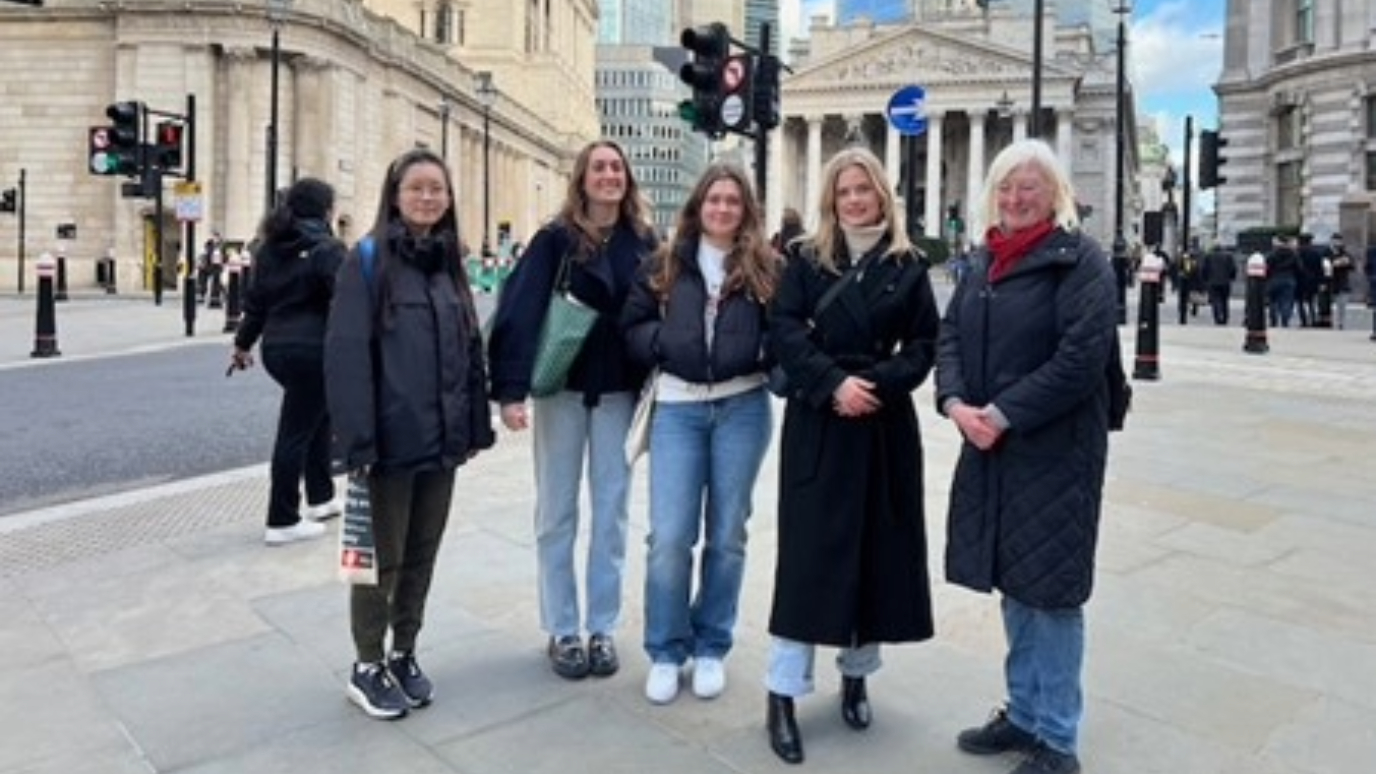
Battling against the stormy weather battering the UK at the time, plus the impediment caused by train strikes, students made their way to the meeting point outside the NERO café at St Paul's tube station. Able to identify fellow students by the Royal Holloway School of Business and Management cotton bags they all carried, they introduced themselves to each other eager for the tour to begin. The meeting site gave them an early introduction to the ongoing development that characterises the history of the City of London via the construction site visible in the photographs, and the meeting spot also allowed them to spot that iconic London vehicle – the London red bus!
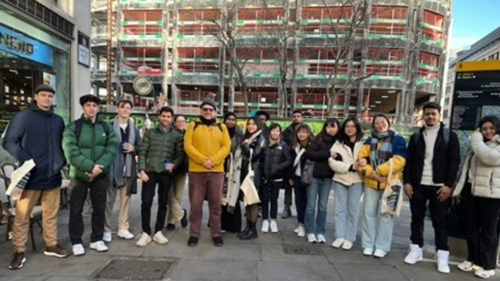
As more passers-by identified the group by the message on the cotton bag, the group of students grew until there were enough people to start the tours. Separating into groups of around fifteen, the students set off on their walking tours of the City of London, each accompanied by a tour guide. Both the guides and the students were enthusiastic about the tour and, within a few minutes of each other three groups formed and departed for the visit.
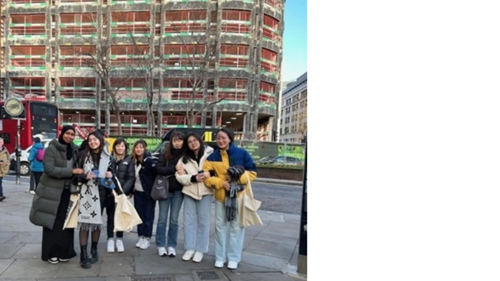
The final group assembled from those who had suffered more of a delay eventually set off with Teddy and their tour guide Anne-Marie for a slightly shorter tour in the remaining time available. Anne-Marie is a retired economist who worked in the City for many years and shared a commonality with the students, having graduated from London School of Economics, a sister institution to Royal Holloway. Both Royal Holloway and LSE are both affiliated to the University of London.
One of the first stops along the route was Temple Bar and Anne-Marie provided a brief history of the portal. The gateway currently leads from the passage adjacent to St Paul's Cathedral to Paternoster Square, where the London Stock Exchange is located. Temple Bar was designed by Sir Christopher Wren, and was originally located where the Strand meets Fleet Street, standing there for over 200 years. It was removed to improve traffic flow through the City. In the late 1800's It was purchased by Lady Meux and transported to Theobalds Park in Hertfordshire, where it graced her estate, before falling into disrepair after her death. In 2001, the Corporation of London funded the return of Temple Bar and re-erected it at the entrance to Paternoster Square where it stands today, once again gracing the lived experience of the majestic City of London.
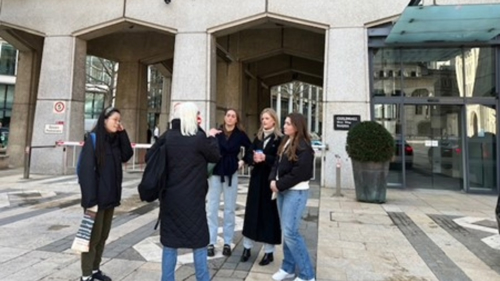
The students were eager to visit the inside of the London Stock Exchange but, since the discontinuation of the Open-Outcry system, the current stock exchange now resembles an office like any other office, where staff support and maintain software systems located on the huge computers that execute and record equity trades listed on the London Stock Exchange. The group were able to admire the surrounding beauty and history of the area adjacent to St Paul's Cathedral.
Anne-Marie then led the group up St Martin's Le Grand past the remains of St Martin-le-Grande church and monastery. Arriving outside the General Post Office she reminded the students of the roles that Sir Rowland Hill played in placing the postal system front-and-centre of communication in the City of London. His contribution revolutionised the postal system, where prepayment, based upon the concept of "Uniform Penny Post", enabled speedy and cheap movement of letters around the capital and beyond.
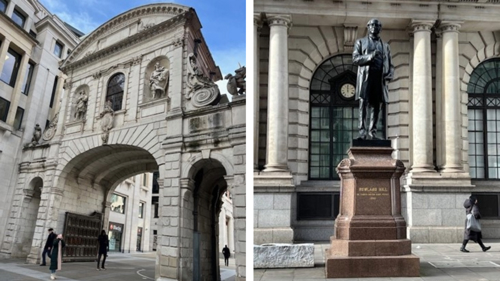
Turning right out of St Martin's Le Grande the group made their way along a passageway leading to Postman's Park. The park is named as this is where postal workers from the nearby General Post Office came to have their lunch.
Anne-Marie introduced the Memorial to Heroic Self-Sacrifice, proposed and championed by the sculptor George Frederic Watts in 1887. Watts’ idea was championed by Henry Gamble, with the wooden loggia erected and opened incomplete in 1900, to mark the Golden Jubilee of Queen Victoria. The loggia was designed by Ernest George and has space for 120 ceramic memorial tiles that were originally designed by William De Morgan. Mary Watts, widow of George Frederic Watts, continued to oversee the project after her husband's passing, but lost interest later owing to the design of the ceramic tiles not fully meeting her expectations. There is lots more to read about this memorial in what is a quaint and peaceful former churchyard that still serves for workers in the City of London to take a quiet respite.
This old wooden loggia stands in memory of those who gave their lives to save the lives of others. Now surrounded by modern buildings, it serves as a reminder to those who paid the ultimate sacrifice, surrendering their own lives to save the lives of others. It is a tribute to those who continue to maintain it in the grounds of the former churchyard. During the 20th and 21st centuries, sporadic interest has been shown in maintaining this quaint site and guides such as Anne-Marie are keen to see the heritage of this memorial maintained and expanded for posterity..

The small group of students that managed to make it to the last departing tour were treated to an interesting history lesson relating to the location of major British banks within the walls of the old city of London. Standing in a small garden outside the headquarters of the Lloyds bank, they learned that many banks had departed the City of London in favour of establishing headquarters in Canary Wharf, where attractive deals were on offer. The loss of these large British bank headquarters from the City has pained the Corporation of the City of London and they continue to endeavour to attract these banks back to the square mile, which the pandemic may have inadvertently helped.
Our guide shared some history of the establishment of the Corporation of the City of London, its relationship with the Crown, and highlighted to the students to look out for pavement furniture with the head of a dragon on it, which signifies the boundary of the City of London. It is this unique relationship between the City of London Corporation and the Crown, with its independence, that serves as a magnet to investors throughout the world. It is this independence that ensures impartiality and openness to trade in a globalised world that is so luring to the international investor.
A lesser-known fact about the City of London is its charitable side. Known for its hard-nosed financial institutions, the city has been home to ‘Livery Companies’ over the centuries. In the fifteen hundreds, there were 48 livery companies that serve to benefit their members. Livery companies were established to coordinate the interests of their members, generally based upon common interests relating to their craft. The Wax Chandlers Hall, located in Gresham Street not far from Lloyds head office, is a fitting example of a livery company’s continued presence in the city of London.
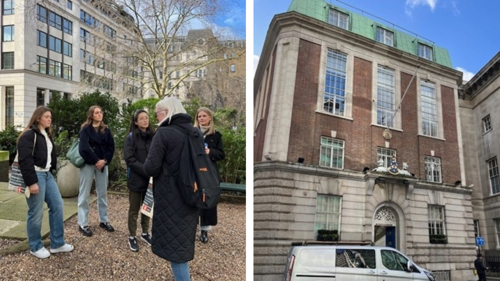
Today, these livery companies attract members who have shared network interests, but also shared values and charity towards others. The charity work undertaken by the livery companies is legendary.
The City of London is governed by the Corporation of the City of London and is headed by the Lord Mayor of the City of London. Whilst the City of London is located within the boundaries of Greater London, its governance remains independent of the Mayor of London – currently Sadiq Khan. This little-known fact is often confusing to visitors not familiar with the notion of the independence of the City of London. The group is pictured here outside the offices of the Corporation of the City of London near the Guildhall. It is in this building that the Lord Mayor of the City of London has his offices. There is much to research about the role of this volunteer position that has to be occupied by someone who has sufficient wealth to maintain a full year of service without the need for outside support. The role is a full-time management and leadership role that is generally associated with championing the interests of the City of London along with charity initiatives.
The Guildhall and adjacent Mansion House are worthy of a study in themselves.
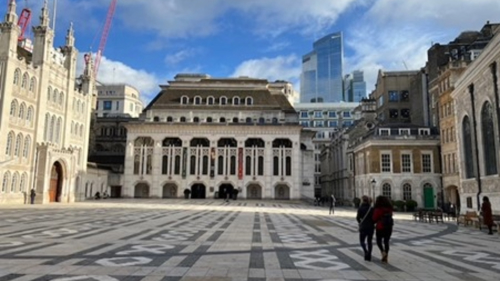
Looking across the square from the Guildhall building, the group learnt about the excavation inside the Guildhall Art Gallery where visitors can view and excavation of the remains of London's Roman Amphitheatre. The Guildhall Art Gallery houses the City of London art collection.
The black circle visible in the paving of the square marks out the perimeter of the old Roman Amphitheatre. It is only the section beneath the Guildhall Art Gallery where this amphitheatre has been excavated. The remainder of the Roman Amphitheatre remains buried. With time being tight, and due to the late start of the tour, the group had to cut short their visit to this landmark centre of the City.
A keen eye will note the construction cranes in the background to the left, a sign of the ongoing development in the City. This development happening behind the flag of the city fluttering in the breeze.
Passing by the iconic Bloomberg head office building, an inspiring visit in itself, the group reached the end of their tour, as Anne-Marie was due to meet her next tour party. A final goodbye was said with the Bank of England and the Royal Exchange in the background. Her parting advice was that we should take time to visit the Bank of England Museum and then enjoy a deserving break at the coffee shop inside the Royal Exchange where one can take in the opulence of the City of London at its best. Inside the Royal Exchange are a number of high-end shops where you can treat yourself to leading brands ranging from classic watches to designer apparel, and more. The students thoroughly enjoyed the tour, despite the inclement weather, and were able to get all their questions answered as they discovered the fascinating history of the development of the City of London into a Financial and business driven powerhouse.
Teddy said of the tour "we all enjoyed a short but inspiring visit to the heart of the financial centre of London. A visit to the City of London, accompanied by informed guides, is strongly recommended".
